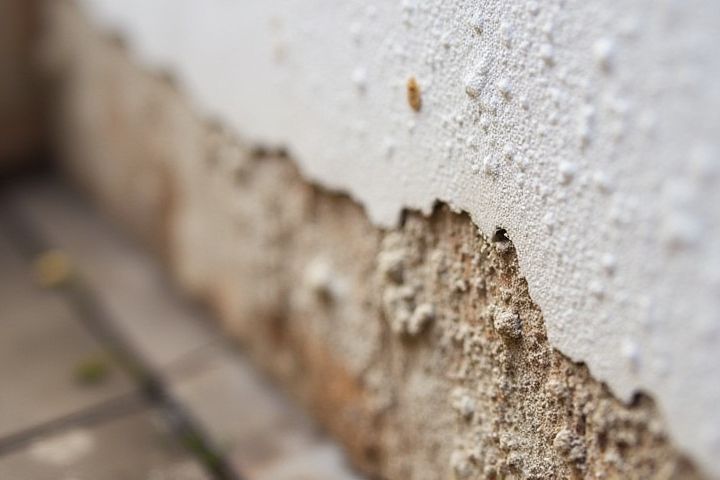
House damp proofing is essential when a property exhibits signs of excess moisture, such as damp patches on walls, peeling paint, or a musty smell. These indicators often suggest rising damp, penetrating damp, or condensation issues that can lead to structural damage and health concerns like mold growth. To effectively mitigate these problems, you may need to employ solutions like damp-proof membranes, chemical damp proofing, or ventilation improvements. Regular inspections are crucial, especially in areas prone to high humidity or standing water. By addressing damp issues promptly, you can protect your home's integrity and ensure a healthier living environment.
What Requires House Damp Proofing
Rising Damp
Rising damp is a common issue in buildings, characterized by moisture rising through the walls due to capillary action. This condition typically occurs when the damp-proof course (DPC) is absent, damaged, or poorly installed, allowing water from the ground to penetrate the masonry. Signs of rising damp include peeling paint, mold growth, and a distinct tide mark on the wall. To effectively combat rising damp, it is crucial to implement proper damp-proofing solutions, such as installing a new DPC or utilizing specialized waterproofing treatments, ensuring your home remains dry and structurally sound.
Condensation Issues
Condensation issues in your home can arise from inadequate insulation, lack of ventilation, or high humidity levels. These factors lead to moisture buildup on surfaces, promoting mold growth and damaging structural integrity. Effective damp proofing interventions, such as installing vapour barriers and improved air circulation systems, mitigate excess moisture. Addressing these condensation problems helps maintain a healthier indoor environment and protects your property's value.
Penetrating Damp
Penetrating damp occurs when water infiltrates your home's walls, often due to faulty roofing, damaged gutters, or cracks in exterior masonry. This type of damp can lead to mold growth and compromise the structural integrity of your property if not addressed promptly. To combat penetrating damp, effective damp proofing solutions include applying water-resistant barriers, improving drainage systems, and repairing any structural damages. Regular inspections and maintenance of your home's exterior can prevent water ingress, ensuring a safer living environment for you and your family.
Mold Growth
House damp proofing is essential for preventing mold growth, which thrives in areas with high humidity and moisture. Key factors that require attention include the integrity of the foundation, walls, and floors, as water ingress can compromise these structures and promote dampness. Proper ventilation in areas like basements and bathrooms also plays a crucial role in reducing humidity levels, thereby minimizing the risk of mold infestations. You should consider professional assessments to identify potential damp sources and implement effective damp proofing solutions to safeguard your home from harmful mold.
Structural Integrity
House damp proofing is essential to maintain structural integrity by preventing moisture-related damage, which can lead to weakened foundations and wooden structures. When moisture infiltrates walls and floors, it can result in mold growth, rotting wood, and deterioration of essential building materials. Essential areas like basements, crawl spaces, and exterior walls should be prioritized for damp proofing solutions, such as the installation of damp proof membranes and effective drainage systems. By addressing dampness proactively, you enhance the longevity and safety of your home while promoting a healthier living environment.
Property Age
Older properties, particularly those built before the 1960s, often lack modern damp-proofing measures, making them more susceptible to moisture issues. Signs of dampness, such as peeling paint, mold growth, and musty odors, can indicate the need for professional intervention. Houses with solid stone or traditional brick walls may require specialized damp-proofing techniques, as they often retain moisture more than contemporary buildings. Implementing adequate damp-proofing solutions not only protects your property's structural integrity but also enhances indoor air quality, promoting a healthier living environment.
Basement Water Ingress
Basement water ingress demands immediate damp proofing attention to prevent structural damage and mold growth. Common causes include groundwater pressure, poorly designed drainage systems, and leaks from plumbing. Implementing effective solutions such as installing a sump pump, sealing cracks with high-quality waterproofing materials, and improving exterior drainage can significantly reduce moisture buildup. You can protect your investment and ensure a healthy living space by addressing these issues promptly.
Poor Ventilation
Poor ventilation in your home can lead to excessive moisture buildup, which is a primary factor in the need for effective damp proofing. When air circulation is inadequate, areas like basements and crawl spaces become prone to dampness, creating an environment conducive to mold and mildew growth. This not only compromises the structural integrity of your home but also poses health risks to occupants, leading to respiratory issues and allergies. Ensuring proper ventilation through exhaust fans, air bricks, or passive ventilation systems can significantly reduce moisture levels and minimize the need for damp proofing interventions.
Building Material Deterioration
House damp proofing is essential to prevent building material deterioration caused by moisture infiltration. Effective damp proofing methods, such as the installation of damp-proof membranes and barriers, protect structural elements like stone, brick, and wood from rot, mold, and decay. When dampness seeps into walls and foundations, it compromises the integrity of materials, leading to costly repairs and decreased property value. By prioritizing damp proofing, you safeguard your home against the threat of water damage and prolong the lifespan of building materials.
Weather Conditions and Location
House damp proofing is essential in areas with high humidity levels, frequent rainfall, or extreme temperature fluctuations. Properties located near water bodies are particularly susceptible to rising damp, which can lead to structural damage if untreated. You should consider the local climate, as regions with more than 30 inches of annual precipitation are at a greater risk for moisture-related issues. In addition, specific soil types, such as clay, can exacerbate damp problems due to their reduced drainage capabilities, making effective damp proofing crucial for maintaining a healthy living environment.
